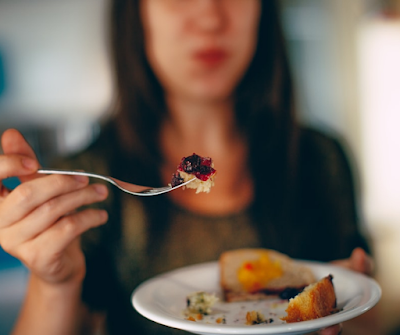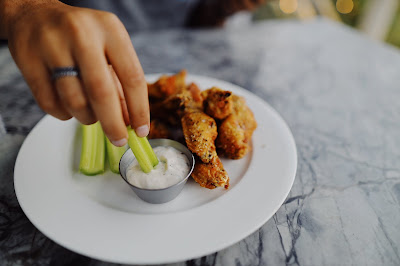Many people ask me what I eat on a daily basis when living with food reactions? So today I am answering that question in the hope that it can help many others understand how to simplify this process and find out what they can eat.
This diet is designed for people with food intolerances to find their base line - a place where you no longer have any food related symptoms. It is for people with food allergies and food intolerances.
The model that I follow comes highly recommended as it was designed by Royal Prince Alfred Hospital Allergy Unit, in NSW Australia who are experts in this.
Foods can upset people for many reasons. Based on more than 20 years of experience and research at the Allergy Unit at Royal Prince Alfred Hospital and the University of Sydney, we’ve developed a comprehensive dietary testing and management program now in use throughout Australia for people with food reactions.
WHAT IS MY EXPERIENCE WITH THIS DIET?
I first went to this Allergy Unit over 20 years ago for myself and also my twins who both have food intolerances. I have been on a version of this diet with additions for most of this time. The twins were babies and with the help of this diet we safely negotiated weaning, introducing foods and living with food intolerances. I also helped my vegetarian daughter adapt this diet for her needs. So I have been doing this for over 20 years. I have also been working with a local dietician who understands the elimination diet to make sure that our family was getting all the nutrients they need.
When I eat this way I reduce most of my painful symptoms including joint pain, peripheral neuropathy which is tingling and numbness in the extremities, most migraine headaches, nerve pain and cramping, nasal congestion and sinusitis, swollen tongue and sore throat, stomach upsets and constipation. As you can see this is a large group of symptoms that makes it well worth my staying on this way of eating. Each week I add in some moderate salicylate foods to vary my diet but if I stray too far I start to get all the bad symptoms again.
WHO SHOULD DO THE ELIMINATION DIET?
Symptoms triggered by food chemical intolerances vary from person to person. The commonest ones are recurrent hives and swellings, headaches, sinus trouble, mouth ulcers, nausea, stomach pains and bowel irritation. Some people feel vaguely unwell, with flu-like aches and pains, or get unusually tired, run-down or moody, often for no apparent reason. Children can become irritable and restless, and behavioural problems can be aggravated in those with nervous system disorders such as ADHD (attention deficit hyperactivity disorder). Even breast-fed babies can have food intolerance reactions due to chemicals from the mother’s diet getting into the breast milk, causing colicky irritable behaviour, loose stools, eczema and nappy (diaper) rashes.
If you’re having trouble working out which foods are upsetting you, professional help may be needed to investigate the problem more systematically. This first step is to follow a strict elimination diet for 3 or 4 weeks to see if symptoms disappear. You may get a withdrawal effect in the first week or so (with a temporary flare-up of symptoms for a few days) so don't give up too soon. Once your symptoms have settled and you're feeling better for at least 7 days in a row, your're ready to start doing challenges to find out which chemicals in your diet cause reactions. From the Friendly Food book.
WHAT DO I EAT ON THIS DIET?
I basically stick to the elimination diet in the low salicylate stage. I also remove all MSG, wheat and dairy from my diet as I am allergic to these. I add in moderate salicylates on a weekly basis but the diet I will be showing you today is the base diet... the one I return to time and time again... the one you can do to discover your allergies or intolerances.... the one with all the safe friendly foods.
Breakfast Choices:
- Eggs cooked any way using either butter, ghee (clarified butter), sunflower oil or safflower oil.
- Porridge of oats (if you are a celiac do not eat these.)
- Porridge of rolled rice.
- Gluten free cereal such as rice bubbles with with rice milk or oat milk or soy milk.
- Rice dish with eggs, chives, celery and parsley.
- Gluten free bread.
- Canned pears in syrup or fresh pears peeled.
- Decaffinated coffee with rice milk or oat milk or soy milk. Plain white sugar can be added.
- Pancake made with rice flour with pear syrup.
- Protein of choice - beans and legumes such as chick peas or lentils or 4 bean mix, tofu, lamb, chicken, beef, white fish, and eggs (if not eaten for breakfast).
- Salad and/or cooked veges: lettuce, leeks, chives, celery, parsley, shallots, garlic, green beans, bamboo shoots, cabbage, brussel sprouts, peas, swedes, mung beans and potatoes.
- Rice or quinoa or gluten free pasta preferably wholegrain.
- Gluten free bread.
- Savoury pancakes.
- Some of my favorites are Chinese style chicken vermicelli rice, Wombok cabbage salad, leek and potato soup, and grilled white fish with wedges and green beans.
- Handful of cashews with celery sticks
- Humus and celery sticks
- Canned pears in syrup
- Fresh pear, peeled.
- Rice crackers with Wow Butter or Pear Jam (recipe in cookbook)
SOURCES OF MAJOR NUTRIENTS ON THIS DIET :
| NUTRIENT | FOOD SOURCES |
|---|---|
| Protein | meats, fish, poultry, eggs, beans, tofu |
| Fat | oils, dairy free margarine, meat, eggs, milk replacements |
| Carbohydrate | rice, potato, bread, pasta, cereals, white sugar |
| Fibre | wholegrain cereals, cabbage, Brussels sprouts, lentils, beans, pears |
| Essential fatty acids (omega-3 fats) | canola, sunflower and safflower oils and margarine; flaxseed oil; egg yolk |
| Vitamin A | dairy foods, eggs, fish, lettuce, Brussels sprouts, beans, cabbage |
| Vitamin B1 | breads (brown and white), brown rice, wholemeal pasta, fortified breakfast cereals |
| Vitamin B12 | meat, chicken, fish, eggs, milk substitutes |
| Other B vitamins | meat, chicken, fish, lentils, wholegrain cereals |
| Vitamin C | potato, parsley, Brussels sprouts, cabbage, peas, swedes (rutabaga) |
| Folic acid | brussels sprouts, lettuce, cabbage, lentils, pulses, wholegrain cereals, fortified breakfast cereals |
| Iron | meat, chicken, fish, eggs, lentils, wholegrain cereals |
| Calcium | calcium fortified soy products |
THE BEST RESOURCES FOR FOLLOWING THIS DIET:
Besides a dietician, who understands this diet and can tweak your diet, my "food bible" is the Friendly Food Book which is a complete guide to avoiding allergies, additives and problem chemicals from Royal Prince Alfred Hospital Allergy Unit and you can purchase it here.
This book will help you understand more about the different kinds of reaction that can occur - food intolerance, food allergy and coeliac disease - and the various foods and food substances that can trigger them.
It is full of easy, delicious recipes for vegetarian dishes, salads, stir-fry, risotto and pasta sauces, this new edition of the original bestseller is designed to help anyone with a food intolerance or food allergy-infant, child or adult-avoid trigger foods, stay well and enjoy a full and rich life.
I also recommend two online support groups for chatting with others about this diet:
RESOURCES:
Food Allergies and Intolerances from Royal Prince Alfred Hospital Allergy Unit.
Dietitians Association of Australia where you can find an accredited practising dietician.
If you have any questions about this diet please ask me in the comments.





No comments:
Post a Comment